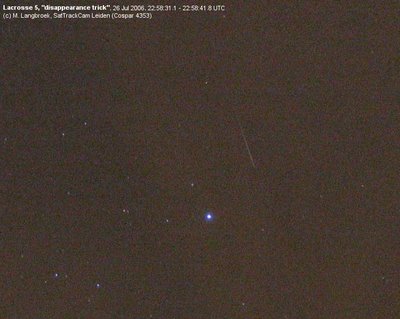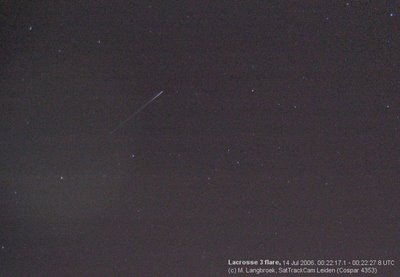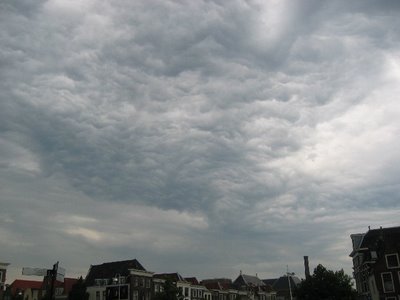
(click for larger image)
Under far from optimal conditions I was able to capture the trails of two
classified Radar birds on one image, only a few degrees apart: IGS 1B (2003-009B, #27699) and Lacrosse 4 (2000-047A, #26473).
This is a crop of the original image, reduced in resolution. In the center of
the image is Corona Borealis.
As the sky was very hazy the original colour image was quite fogged, so I
transferred it to B/W and then played with the contrast a bit to make the trails
stand out better.
It became overcast shortly after so no chance to capture the odd bird Lacrosse 5
again. My photograph of the 26th sparked a whole series of communications about the cause of the "disappearance trick" and the configuration of the Lacrosses in general.



